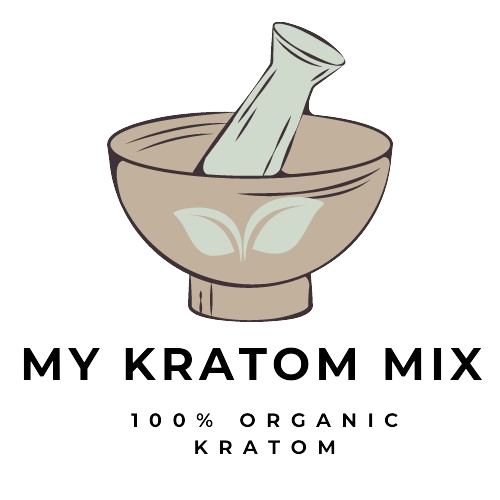Kratom (Mitragyna speciosa) is a tropical tree native to Southeast Asia, particularly Thailand, Indonesia, Malaysia, and Papua New Guinea. For centuries, the leaves of the kratom tree have been used by local populations for their medicinal properties. In recent years, kratom has gained popularity worldwide, particularly in the Western world, as a natural remedy for various ailments, including pain relief, anxiety, and depression. The unique effects of kratom are largely attributed to its complex alkaloid profile. In this blog, we will explore kratom alkaloids, their chemistry, and how they contribute to the plant's diverse effects.
Understanding Alkaloids
Alkaloids are a class of naturally occurring organic compounds that contain nitrogen atoms. These compounds are found in a variety of plants and are known for their potent physiological effects on humans and animals. Alkaloids have been used for medicinal purposes for centuries and include well-known substances such as caffeine, nicotine, and morphine.
In the case of kratom, the plant contains over 40 different alkaloids, each contributing to its unique properties. The most prominent and well-studied alkaloids in kratom are mitragynine and 7-hydroxymitragynine, but several other alkaloids also play significant roles.
Key Alkaloids in Kratom
1. Mitragynine
Mitragynine is the most abundant alkaloid in kratom, making up about 60% of the total alkaloid content in the leaves. It is primarily responsible for the plant's stimulating and pain-relieving effects. Mitragynine acts on the mu-opioid receptors in the brain, similar to opioid drugs, but with a different mechanism of action.
- Effects: Mitragynine is known for its stimulant properties at lower doses, providing increased energy, focus, and alertness. At higher doses, it exhibits analgesic (pain-relieving) effects, making it a popular choice for individuals seeking natural pain management.
2. 7-Hydroxymitragynine
7-Hydroxymitragynine is a minor alkaloid in kratom but is significantly more potent than mitragynine. It is estimated to be up to 13 times more potent than morphine and is primarily responsible for kratom's sedative and analgesic effects.
- Effects: 7-Hydroxymitragynine is a powerful pain reliever and sedative. It binds to the mu-opioid receptors more strongly than mitragynine, providing potent pain relief and relaxation. Due to its potency, it is often the focus of discussions regarding kratom's potential for addiction and dependence.
3. Speciogynine
Speciogynine is another major alkaloid in kratom, although less studied than mitragynine and 7-hydroxymitragynine. It is an antispasmodic, meaning it can help reduce muscle spasms and cramps.
- Effects: Speciogynine contributes to kratom's muscle relaxant properties, making it useful for individuals suffering from muscle pain and tension.
4. Paynantheine
Paynantheine is the second most abundant alkaloid in kratom, accounting for about 8-9% of the total alkaloid content. It acts as a muscle relaxant and has mild sedative effects.
- Effects: Paynantheine supports the overall relaxing and pain-relieving properties of kratom, helping to ease tension and promote relaxation.
5. Speciociliatine
Speciociliatine is an alkaloid structurally similar to mitragynine but acts as an antagonist at the mu-opioid receptors. This means it can potentially counteract some of the effects of mitragynine and 7-hydroxymitragynine.
- Effects: Speciociliatine may help balance the effects of other alkaloids in kratom, reducing the risk of side effects and contributing to a more balanced experience.
Synergistic Effects of Kratom Alkaloids
The unique effects of kratom are not solely due to individual alkaloids but rather the synergistic interaction between them. This complex interplay creates a broad spectrum of effects, ranging from stimulating and energizing to sedative and pain-relieving. The balance of alkaloids in different kratom strains accounts for the diverse range of experiences reported by users.
For example, strains like Maeng Da are known for their high mitragynine content, providing stimulating and energizing effects. On the other hand, strains like Red Bali are richer in 7-hydroxymitragynine, offering more sedative and pain-relieving properties. Green vein strains tend to have a balanced alkaloid profile, delivering both stimulating and relaxing effects.
Research and Pharmacology
Despite its long history of use, scientific research on kratom and its alkaloids is still in its early stages. Most of the current knowledge comes from anecdotal reports and preliminary studies. However, interest in kratom's pharmacology is growing, and researchers are beginning to uncover the mechanisms behind its effects.
Studies have shown that mitragynine and 7-hydroxymitragynine interact with the opioid receptors in the brain, but they also affect other neurotransmitter systems, including adrenergic, serotonergic, and dopaminergic pathways. This complex interaction contributes to kratom's diverse effects and distinguishes it from traditional opioids.
Safety and Regulation
The increasing popularity of kratom has raised concerns about its safety and potential for abuse. While many users report positive experiences with kratom, including relief from pain, anxiety, and depression, there have also been reports of adverse effects, including dependency and withdrawal symptoms.
Due to these concerns, kratom's legal status varies widely around the world. In some countries and U.S. states, kratom is classified as a controlled substance, while in others, it remains legal and accessible. The lack of regulation and standardization in the kratom market also raises concerns about product quality and safety.
Conclusion
Kratom alkaloids play a crucial role in the plant's unique effects and therapeutic potential. Understanding the chemistry and pharmacology of these alkaloids can help users make informed decisions about their kratom consumption and maximize the benefits while minimizing risks.
As research on kratom continues to evolve, it is essential to approach its use with caution and awareness. Purchasing kratom from reputable sources, adhering to recommended dosages, and staying informed about the latest scientific findings can contribute to a safer and more effective kratom experience.
Whether you are a long-time kratom enthusiast or new to the world of kratom, understanding the role of alkaloids in this remarkable plant can enhance your appreciation and enjoyment of its benefits. As always, consult with a healthcare professional before starting any new supplement, especially if you have underlying health conditions or are taking other medications. By staying informed and mindful, you can explore the potential of kratom safely and responsibly.

